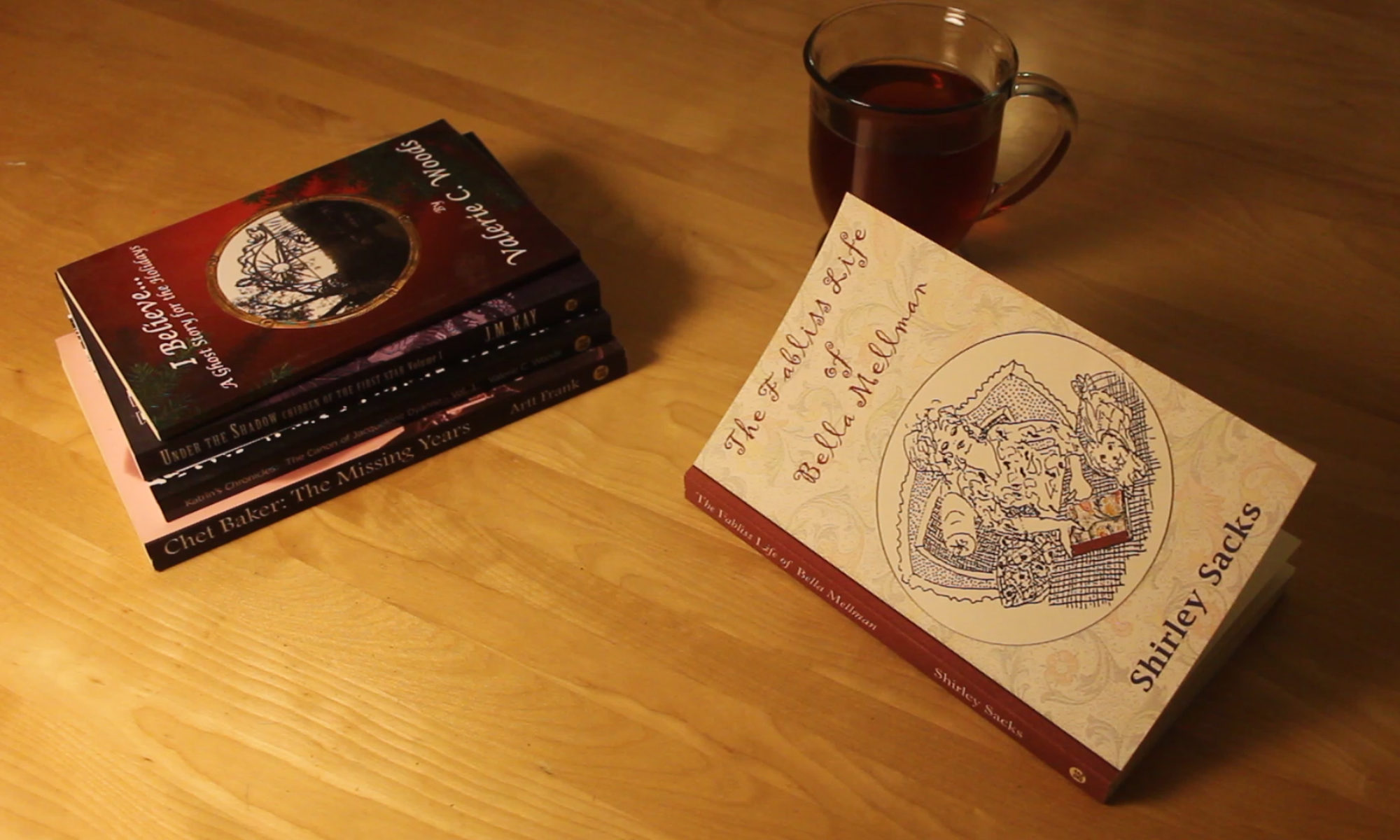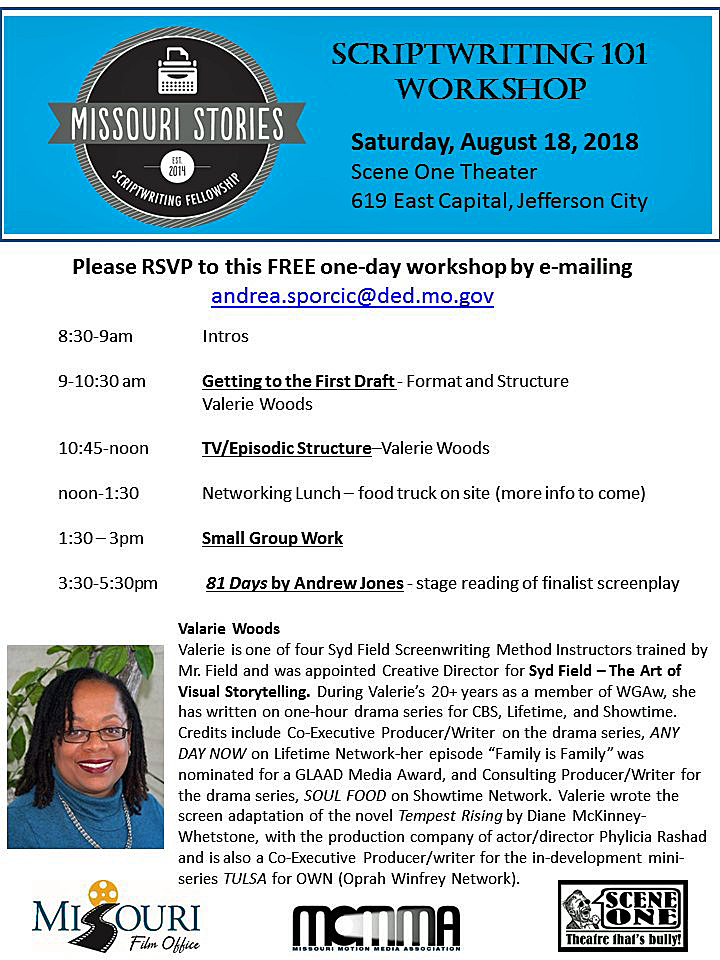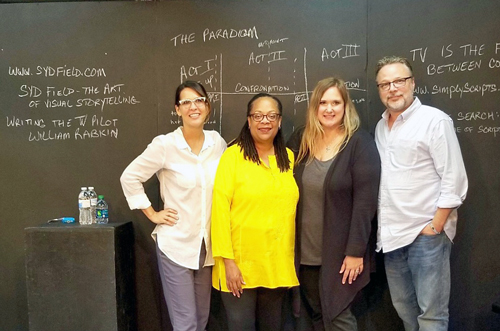 Recently, I had the pleasure of offering two writing workshops at the request of the Missouri Film Office in support of their Scriptwriting 101 initiative MOStories – The Missouri Stories Scriptwriting Fellowship. This is an international competition for screenplays and television pilot scripts with story lines set in the state of Missouri.
Recently, I had the pleasure of offering two writing workshops at the request of the Missouri Film Office in support of their Scriptwriting 101 initiative MOStories – The Missouri Stories Scriptwriting Fellowship. This is an international competition for screenplays and television pilot scripts with story lines set in the state of Missouri.
The morning session focused on film and the afternoon session was dedicated to television pilots. As an instructor for the Syd Field Screenwriting Method, I utilized the story and script structure based on Syd’s unique paradigm in both sessions, as it is applicable to writing for both film and television. In each medium your story will have a beginning, middle and end (though not necessarily in that order).
In a screenplay the original paradigm deconstructs a script with three-act structure. To start writing the script, the writer needs to know four things: The End, The Beginning, Plot Point I (that moves us into Act II) and Plot Point II (that moves us into Act III). Additionally, as Syd elaborated in his 2nd book, The Screenwriter’s Workbook, that three-act structure can be further defined with an additional Mid-Point (that links the first and second parts of Act II). This then creates four separate segments of a script, which fits with a basic television one-hour format.
Of course, modern television dramas can have five acts, or four acts with a tag either in the beginning and/or the conclusion. Syd further expanded the paradigm by including a “pinch” and/or an “inciting incident” which again helps in using it as a resource for writing one-hour dramas.
And, yes, a feature is longer than an episode of television. What about the page number references? How can I have Plot Point I near page 30 if my script is only 55 pages long? Hold on! Don’t be overwhelmed.
Always remember what Syd says about the paradigm: “We’re not talking numbers here, we’re talking form: beginning, middle, and end…It is not laid down in concrete. As a matter of fact, the great thing about structure is that it’s fluid; like a tree in the wind, it bends, but it doesn’t break.” I find this liberating and understand that page counts, where plot points appear, etc. are sign posts for me, the writer, in how a story develops – set up, confrontation and resolution – regardless of its length or medium. As Syd also says in The Screenwriter’s Workbook exercise on the first ten pages of a screenplay: “Screenplay form should never get in the way of your screenwriting.”
How did this play out in the MOStories workshop? The paradigm is important. Formatting is important. And, in Syd’s teaching, we are reminded not to get too rigid, just tell your story. What happens and who does it happen to? This is the focus of your writing. There were many questions in the workshop about proper format, act breaks, page count, and yes these are definitely things to keep in mind. And there are plenty of easy to access resources that give this basic information. In the workshop, though these were touched upon, primarily we explored how to get an idea from your head onto the page.
When an idea for a story comes to me it rarely, if ever, comes in a pure linear or narrative manner from beginning to end. Often the main character comes up who faces an unusual situation, like inadvertently witnessing a crime. Perhaps I want her to be the accidental detective who catches the perpetrator. Or perhaps she runs away and then has remorse and tries to fix it. There are flashes of scenes, dialogue, other characters, images, themes, etc. I write them down as they come, not trying to put them in a narrative line. Once all the flashes are on the page, it’s time to ask the big question? “So, what’s the story about?” This can be surprisingly difficult to articulate. It’s so exciting with all these great ideas and scenes, but really, what’s the story?
In The Screenwriter’s Workbook (Chapter 4) Syd recounted an experience he had with writer’s block. He was able to get through it once he recognized the importance of knowing your story clearly before you start writing the screenplay. Otherwise, you’ll get to a certain point and don’t know where to go from there. Syd came to understand during this particular experience of writer’s block that “The hardest thing about writing is knowing what to write.”
If your stories are born in the same way as mine, here is what I have learned to do. After reviewing all the exciting flashes of inspiration, it’s time to make choices, as guided by Syd’s paradigm: how do I want it to end? Where will it begin? What are the two places where the story shifts from Set-up to Confrontation (Plot Point I), and Confrontation to Resolution (Plot Point II)?
And here is what I really love about the paradigm, as Syd articulates in The Screenwriter’s Workbook: “The paradigm becomes your structural anchor.” Knowing the core of what I want to write, no matter how far afield I go with creative ideas, I never get lost or wander aimlessly in the middle of, say, Act Two. I can see the road ahead. And yes, sometimes the story takes a wild tangent and maybe it won’t end the way I planned. That’s not a failure. It’s a revelation. (And it’s happened more than once!) And I know the revelation would not have come without first following the structure. And so, what I hope I was able to communicate to the writers in that workshop (and in this recap) is to remember this: The form of the paradigm is not a set of unwavering rules, rather it is a resource that functions as a map of your core story that allows your screenwriting to fluidly traverse the full range of your imagination.
Originally posted on Syd Field – The Art of Visual Storytelling



